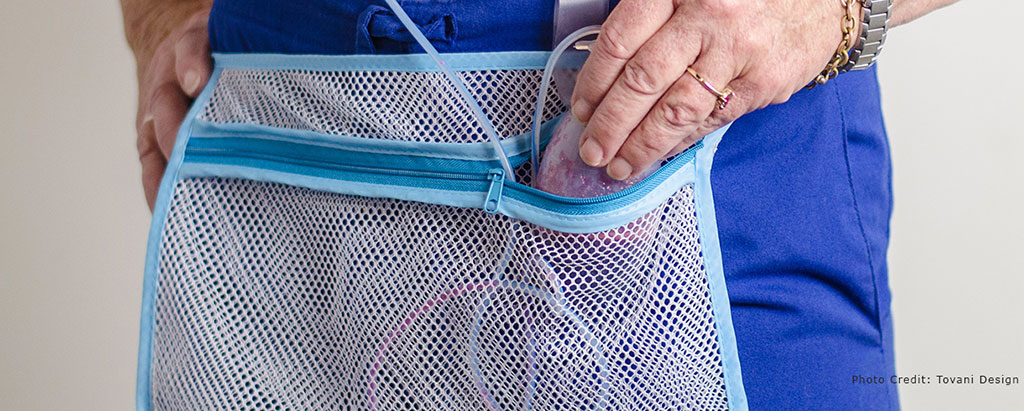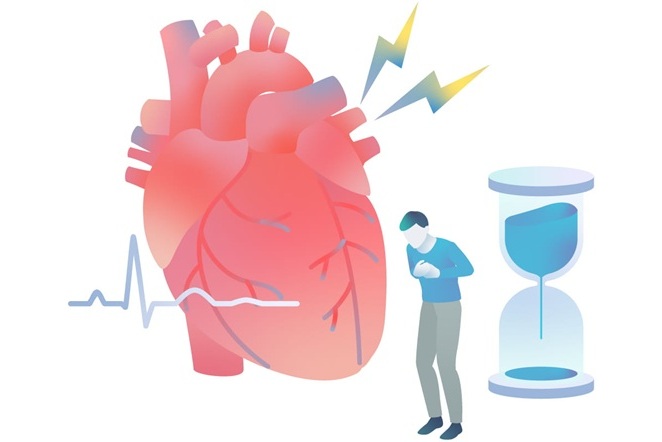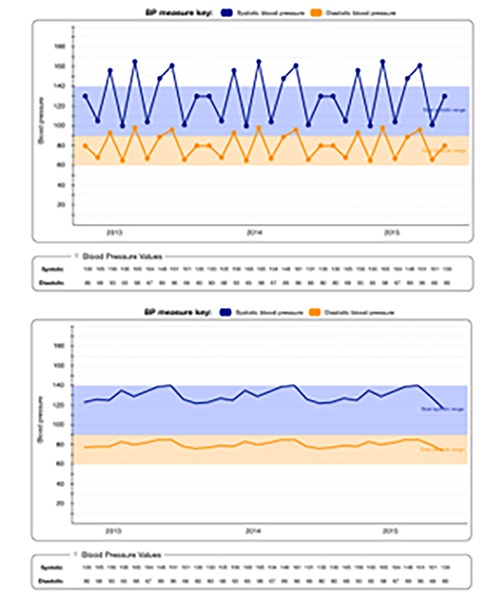Medical Drain Carrier Reduces Hospital Readmissions 
|
By HospiMedica International staff writers Posted on 25 Jan 2022 |

Image: The KILI Carrier reduces discomfort and improves healing for those requiring JP drains (Photo courtesy of KILI)
An apron-like mesh pouch reduces suture tears and the number of post-surgical readmissions following Jackson Pratt (JP) drain placement.
The KILI Carrier (Sacramento, CA, USA) is a simple, elegant, and effective solution for managing cumbersome JP medical drains. In the hospital, the KILI Carrier provides centralized access for a nurse or caregiver; allows visibility to drain bulb fluid levels; makes the process of changing gowns and bathing faster and easier; and promotes patient mobility and independence. Currently, drain management typically involves improvised safety pins or clips to suspend the drains, which routinely snag on drawer pulls and doorknobs, and embarrass patients wearing body fluids drains clipped to their clothing.
“Often patients aren't informed about JP drains before surgery, and it's a harsh awakening after the procedure that octopus-like drains are attached to their bodies for a period of time,” said Cinde Dolphina, a four-time cancer survivor who patented the device. “Prior to KILI Carrier, the standard medical option was to clip the drain to your clothing using a safety pin, risking tearing a suture. This increases your chances of a hospital visit where sepsis, Norovirus, and coronavirus risks are often higher.”
“Drains are a big pain point for patients, and the KILIi Carrier tackles some major issues head on. Patients can now shower comfortably without the fear or pain of ripping sutures from their skin,” said Benjamin Lemelman, MD, of University of Chicago Medicine (IL, USA). “At home, patients can go to dinner with their family and have the drains neatly concealed beneath their clothes. Surgeons place drains every day for many different procedures, and patients often live with drains for weeks at a time. I wish we had the Kili Carriers available sooner, as they truly enhance the recovery process.”
A JP drain is a closed-suction post-operative device for collecting bodily fluids from surgical sites. It consists of an internal drain connected to a grenade-shaped bulb or circular cylinder via plastic tubing. The purpose of a JP drain is to prevent fluid (blood or other) build-up in the post-op surgical space, which may cause disruption of the healing process or become an infected abscess. It can also be used to evacuate an internal abscess before surgery when an infection already exists.
Related Links:
KILI Carrier
The KILI Carrier (Sacramento, CA, USA) is a simple, elegant, and effective solution for managing cumbersome JP medical drains. In the hospital, the KILI Carrier provides centralized access for a nurse or caregiver; allows visibility to drain bulb fluid levels; makes the process of changing gowns and bathing faster and easier; and promotes patient mobility and independence. Currently, drain management typically involves improvised safety pins or clips to suspend the drains, which routinely snag on drawer pulls and doorknobs, and embarrass patients wearing body fluids drains clipped to their clothing.
“Often patients aren't informed about JP drains before surgery, and it's a harsh awakening after the procedure that octopus-like drains are attached to their bodies for a period of time,” said Cinde Dolphina, a four-time cancer survivor who patented the device. “Prior to KILI Carrier, the standard medical option was to clip the drain to your clothing using a safety pin, risking tearing a suture. This increases your chances of a hospital visit where sepsis, Norovirus, and coronavirus risks are often higher.”
“Drains are a big pain point for patients, and the KILIi Carrier tackles some major issues head on. Patients can now shower comfortably without the fear or pain of ripping sutures from their skin,” said Benjamin Lemelman, MD, of University of Chicago Medicine (IL, USA). “At home, patients can go to dinner with their family and have the drains neatly concealed beneath their clothes. Surgeons place drains every day for many different procedures, and patients often live with drains for weeks at a time. I wish we had the Kili Carriers available sooner, as they truly enhance the recovery process.”
A JP drain is a closed-suction post-operative device for collecting bodily fluids from surgical sites. It consists of an internal drain connected to a grenade-shaped bulb or circular cylinder via plastic tubing. The purpose of a JP drain is to prevent fluid (blood or other) build-up in the post-op surgical space, which may cause disruption of the healing process or become an infected abscess. It can also be used to evacuate an internal abscess before surgery when an infection already exists.
Related Links:
KILI Carrier
Latest Patient Care News
- Portable Biosensor Platform to Reduce Hospital-Acquired Infections
- First-Of-Its-Kind Portable Germicidal Light Technology Disinfects High-Touch Clinical Surfaces in Seconds
- Surgical Capacity Optimization Solution Helps Hospitals Boost OR Utilization

- Game-Changing Innovation in Surgical Instrument Sterilization Significantly Improves OR Throughput
- Next Gen ICU Bed to Help Address Complex Critical Care Needs
- Groundbreaking AI-Powered UV-C Disinfection Technology Redefines Infection Control Landscape
- Clean Hospitals Can Reduce Antibiotic Resistance, Save Lives
- Smart Hospital Beds Improve Accuracy of Medical Diagnosis
- New Fast Endoscope Drying System Improves Productivity and Traceability
- World’s First Automated Endoscope Cleaner Fights Antimicrobial Resistance
- Portable High-Capacity Digital Stretcher Scales Provide Precision Weighing for Patients in ER
- Portable Clinical Scale with Remote Indicator Allows for Flexible Patient Weighing Use
- Innovative and Highly Customizable Medical Carts Offer Unlimited Configuration Possibilities
- Biomolecular Wound Healing Film Adheres to Sensitive Tissue and Releases Active Ingredients
- Wearable Health Tech Could Measure Gases Released From Skin to Monitor Metabolic Diseases
- Wearable Cardioverter Defibrillator System Protects Patients at Risk of Sudden Cardiac Arrest
Channels
Critical Care
view channel
Breakthrough AI Technology Accurately Assesses Heart Failure Severity
Heart failure (HF) is a complex condition where the heart cannot effectively pump blood to meet the body’s needs due to underlying medical issues. It is marked by recurring episodes and frequent hospitalizations.... Read more
New Approach to Visualizing Blood Pressure Data Can Help Better Manage Hypertension Patients
Sometimes, a patient’s blood pressure may be elevated in a doctor's office but normal at home, a phenomenon known as white coat hypertension. It is estimated that 10% to 20% of high blood pressure diagnoses... Read moreSurgical Techniques
view channel
DNA Origami Improves Imaging of Dense Pancreatic Tissue for Cancer Detection and Treatment
One of the challenges of fighting pancreatic cancer is finding ways to penetrate the organ’s dense tissue to define the margins between malignant and normal tissue. Now, a new study uses DNA origami structures... Read more
Pioneering Sutureless Coronary Bypass Technology to Eliminate Open-Chest Procedures
In patients with coronary artery disease, certain blood vessels may be narrowed or blocked, requiring a stent or a bypass (also known as diversion) to restore blood flow to the heart. Bypass surgeries... Read more
Intravascular Imaging for Guiding Stent Implantation Ensures Safer Stenting Procedures
Patients diagnosed with coronary artery disease, which is caused by plaque accumulation within the arteries leading to chest pain, shortness of breath, and potential heart attacks, frequently undergo percutaneous... Read more
World's First AI Surgical Guidance Platform Allows Surgeons to Measure Success in Real-Time
Surgeons have always faced challenges in measuring their progress toward surgical goals during procedures. Traditionally, obtaining measurements required stepping out of the sterile environment to perform... Read moreHealth IT
view channel
Printable Molecule-Selective Nanoparticles Enable Mass Production of Wearable Biosensors
The future of medicine is likely to focus on the personalization of healthcare—understanding exactly what an individual requires and delivering the appropriate combination of nutrients, metabolites, and... Read more
Smartwatches Could Detect Congestive Heart Failure
Diagnosing congestive heart failure (CHF) typically requires expensive and time-consuming imaging techniques like echocardiography, also known as cardiac ultrasound. Previously, detecting CHF by analyzing... Read moreBusiness
view channel
Expanded Collaboration to Transform OR Technology Through AI and Automation
The expansion of an existing collaboration between three leading companies aims to develop artificial intelligence (AI)-driven solutions for smart operating rooms with sophisticated monitoring and automation.... Read more

















